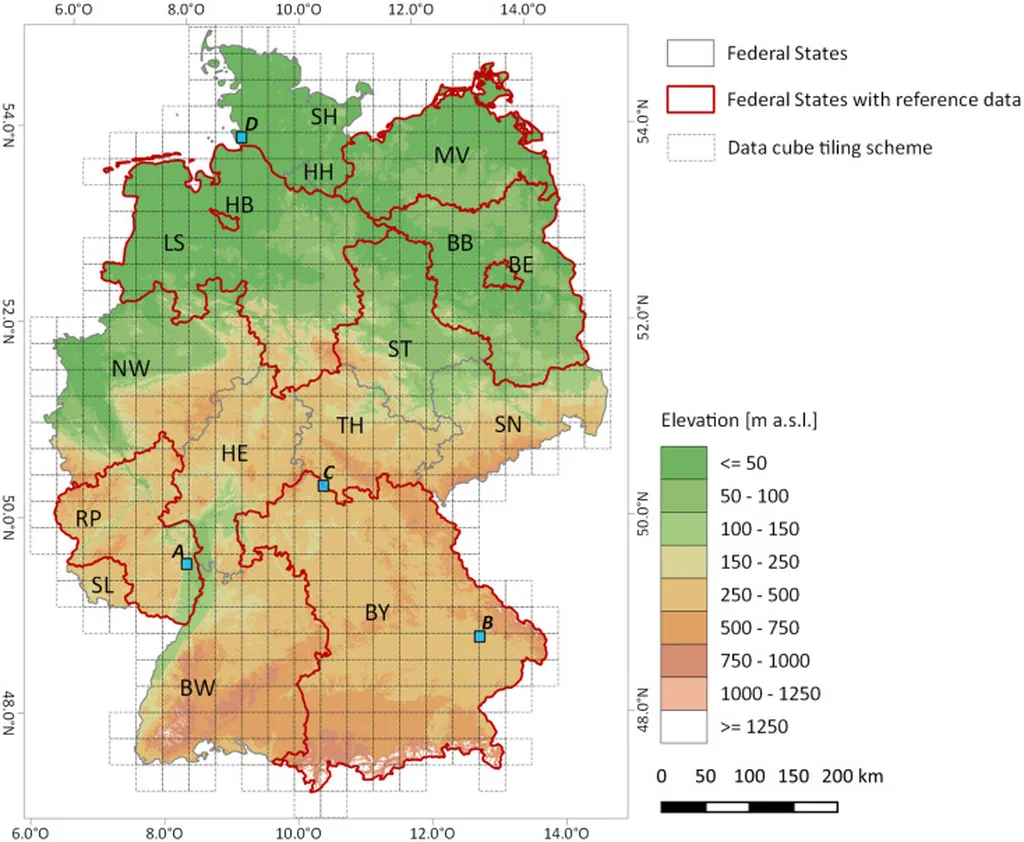In a significant leap forward for agricultural monitoring, researchers have developed a robust and scalable framework for annual crop type mapping using advanced machine learning and satellite imagery. This innovation, published in the journal *Intelligent Agricultural Technology* (translated from German), promises to revolutionize how we track and manage croplands, with profound implications for the energy sector and beyond.
The study, led by Krishnagopal Halder from the Leibniz Centre for Agricultural Landscape Research (ZALF) in Germany, addresses a critical need in modern agriculture: the ability to monitor vast and diverse croplands accurately and efficiently. High-resolution, large-scale maps of agricultural lands are essential for developing sustainable strategies to combat climate change, biodiversity loss, and rising food demands. However, mapping these lands over time has been a complex challenge until now.
Halder and his team integrated multi-temporal satellite data from Sentinel-1 SAR and Sentinel-2 MSI with machine learning models, including XGBoost, CatBoost, a Bidirectional LSTM (BiLSTM), and a Self-Attention-enhanced architecture. The focus was on five major crops—winter wheat, winter rapeseed, winter barley, silage maize, and sugar beet—across three German states: Lower Saxony, North Rhine-Westphalia, and Brandenburg, for the years 2021 and 2023.
The BiLSTM model emerged as the top performer, achieving an overall accuracy of approximately 93%. Data fusion improved classification accuracy by 2–3% compared to single-sensor inputs. “The integration of multiple data sources and advanced machine learning models has significantly enhanced our ability to map crop types accurately,” Halder explained. “This framework not only improves our understanding of agricultural systems but also supports better decision-making for farmers and policymakers.”
One of the key innovations in this study is the use of linear interpolation for gap filling and percentile-based normalization, which offers a good balance of simplicity and effectiveness. The framework also demonstrated strong spatial transferability and adaptability, achieving high performance in new regions even with limited training data. This adaptability is crucial for scaling the technology across different geographical areas and agricultural contexts.
The implications for the energy sector are substantial. Accurate crop mapping can optimize the use of agricultural lands for bioenergy production, ensuring a sustainable supply of feedstocks for biofuels and biogas. “By providing detailed and up-to-date information on crop types and their distribution, this framework can help energy companies make informed decisions about where to source their feedstocks,” Halder noted. “This can lead to more efficient and sustainable energy production.”
The study’s integration with open platforms like Google Earth Engine further enhances its scalability, enabling field-level monitoring across Europe. This capability is vital for long-term agroecosystem monitoring and supporting the development of robust, transferable tools for agricultural decision-making.
As the world grapples with the challenges of climate change and food security, innovations like this framework are more important than ever. By providing accurate and scalable crop mapping, researchers and policymakers can develop strategies that balance the needs of food production, energy generation, and environmental sustainability. The research published in *Intelligent Agricultural Technology* marks a significant step forward in this direction, offering a powerful tool for the future of agriculture and energy.
This research not only shapes the future of agricultural monitoring but also sets a new standard for integrating advanced technologies into practical, scalable solutions. As Halder and his team continue to refine and expand their framework, the potential applications and benefits for the energy sector and beyond are vast and promising.

